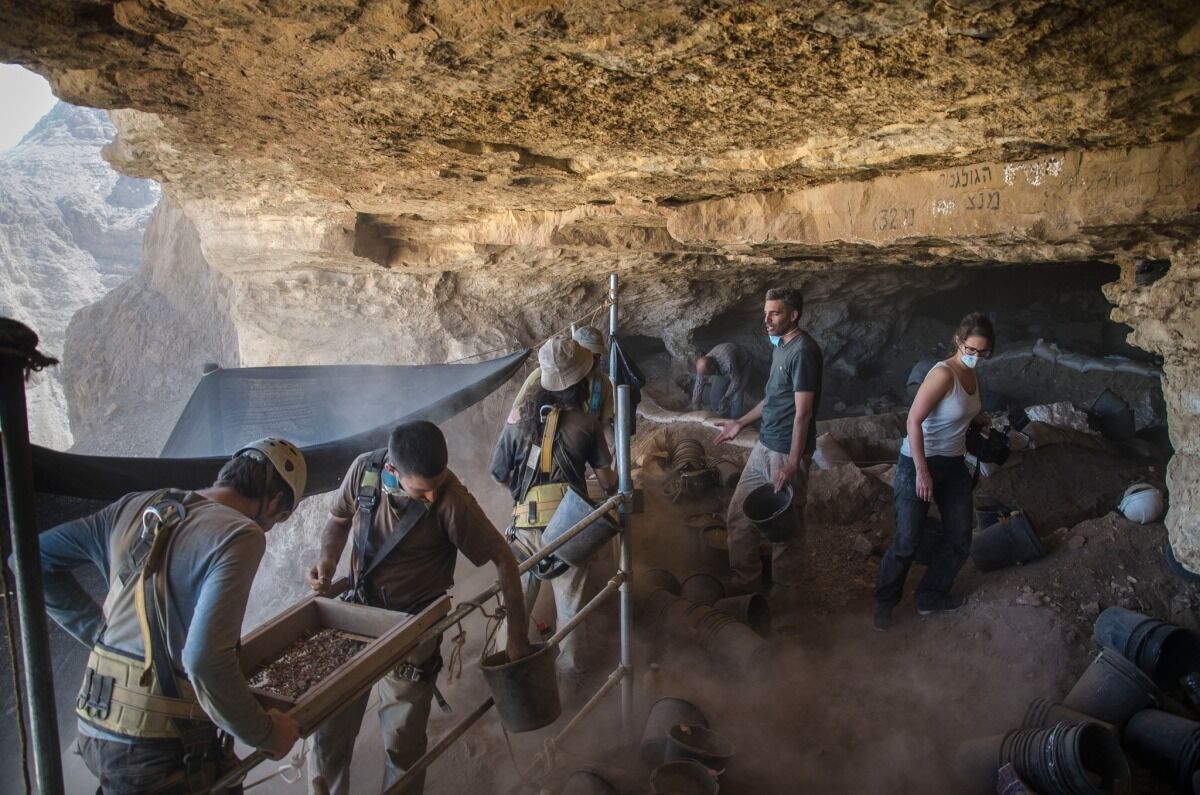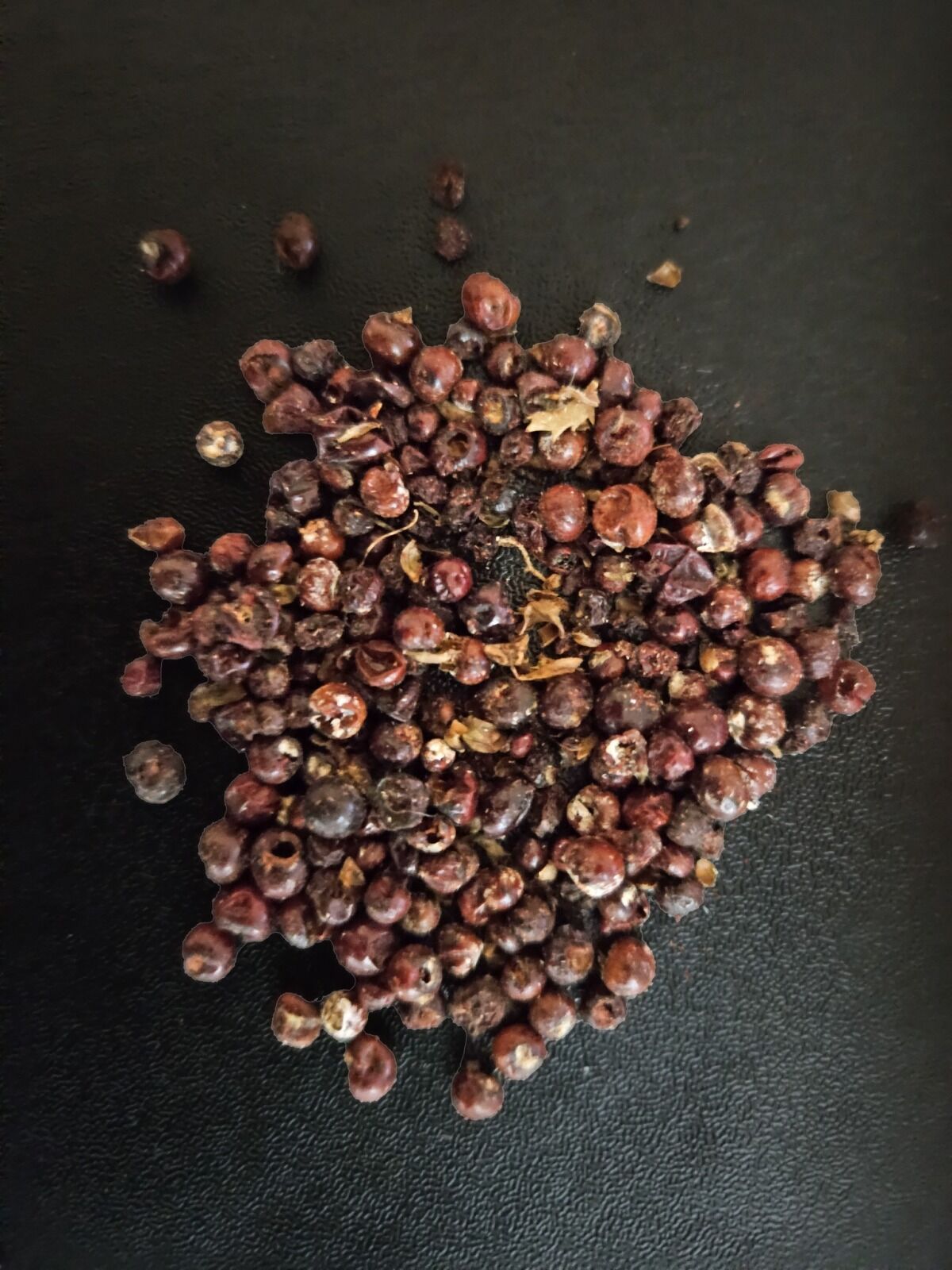A new joint study conducted by the Israel Antiquities Authority, Bar-Ilan University and the Hebrew University of Jerusalem has revealed the earliest evidence of red-dyed textiles.
The 3,800-year-old textile (radiocarbon dated to between 1954–1767 b.c.e.) was dyed with oak scale insects, which researchers have linked to the biblical “scarlet worm” (tola’at hashani or תולעת שני) mentioned in over 25 biblical passages.
The rare textile is less than 2 centimeters wide (about the size of a postage stamp) and was originally found in 2016 in the “Cave of Skulls” in the Judean Desert. The bright red color caught the attention of archaeologists.

Biblically, the use of red is often mentioned in conjunction with blue (Tekhelet) and purple (Argaman)—all of which were precious in the ancient world.
Exodus 26:1 details the scarlet color used in the tabernacle: “Moreover thou shalt make the tabernacle with ten curtains: of fine twined linen, and blue, and purple, and scarlet, with cherubim the work of the skilful workman shalt thou make them.”
In Exodus 28:5, the same color is mentioned again in reference to the priestly garments: “And they shall take the gold, and the blue, and the purple, and the scarlet, and the fine linen.”
The Hebrew word for both passages refers to the “scarlet worm.”
Even before Moses, the Bible indicates the existence of scarlet-colored fabrics. Genesis 38 records one of the twin sons of Judah having a scarlet thread tied to his arm. These events would have occurred during or just after the period to which these fabrics are dated.
Prof. David Illuz wrote:
Although it was discovered that Israel has a native species of scale insect living on Palestinian oak (Quercus calliprinos), capable of producing a red-orange color, the analytical results indicate that in the case at hand, the species of scale insects is Kermes vermilio, which lives on the kermes oak tree (Quercus coccifera). This tree species is common in the central and eastern Mediterranean region, including Spain, France, and other areas, but is not found in the land of Israel.
The presence of these dyes, which could not have been produced in Israel, indicate that there were trade connections between Mediterranean powers during the Middle Bronze Age.
The Bible and other historical sources mention the use of insect-dyed red textiles, but “very few textiles dyed with kermes insects that predate the Roman Period have been found worldwide.” Most red dye at the time was extracted from madder, a herbaceous plant belonging to the Rubiaceae family. Dye produced from madder is not nearly as vivid as the dye extracted from these “scarlet worms,” but it was also less laborious. The rich hues of these insect-dyed fabrics and the minuscule amount of dye that comes from each insect would have made these textiles expensive. Another evidence of the value of these insect-dyed red fabrics is that they have never been discovered before, unlike rich blue and purple textiles. Proverbs 31:21 says that those in the household of a virtuous and industrious woman “are clothed with scarlet.”
The researchers were able to identify the origin of the red dye through a technique called High-Pressure Liquid Chromatography (hplc). In an hplc test, various liquid compounds are pushed through about three to five microns of sample material. The sample’s reactions to various substances separate it into its parts before they pass through a series of detectors. The detectors produce graphs, which scientists can analyze to determine the exact chemical recipe of the sample material.
Curator of the Organic Material Collection at the Israel Antiquities Authority Dr. Na’ama Sukenik said:
This advanced analytical method enabled us to pinpoint the dye’s origin down to the exact species of scale insect. Thus, we can determine with high probability that in ancient times, the textile was dyed using a species of Kermes vermilio, which produces kermesic acid, imparting the distinctive red hue. …
The important find bridges the gap between written sources and the archaeological discoveries, providing evidence that the ancient textile dyeing industry was — already at this stage, sufficiently established for dyeing using animals. The rare textile is a testament to broad international commercial networks functioning already at this time and indicates the presence of an elite society.

Dr. Uri Davidovich, an excavation director at the Cave of the Skulls on behalf of the Hebrew University in Jerusalem, reported:
Although it is difficult to know how this textile arrived in this desert cave, it is significant evidence of ancient knowledge in dyeing wool fibers using scale insects to achieve the red color as early as the Middle Bronze Age—about 3,800 years ago.
These textiles, which predate Moses, violate one of the laws provided for clothing in the Torah. The two basic components of woven cloth are the warp and the weft. The warp yarns would be vertical and held taught by loom weights. The weft threads were then weaved between these warp yarns, forming a cloth. These particular fabrics were made out of linen warp yarns and woolen weft threads. Deuteronomy 22:11, however, states: “Thou shalt not wear a mingled stuff, wool and linen together.”
Though these textiles predate the Torah, they confirm that the mixing of wool and linen was a common practice–as were many of the customs forbidden in the Pentateuch.
It takes ideal conditions for ancient textiles to survive. The microclimate of the Cave of the Skulls was dry enough to prevent any decomposition of these fabrics. Now, these fabrics can corroborate a few simple facts stated in the Bible. For instance, this discovery shows that it was not an anachronism for the Israelites to have used insect-based dye in producing fabrics for the temple. Even the son of Judah absolutely could have had an insect-died scarlet thread tied to his arm.
The discovery also validates that the Middle Bronze Age was not a time where drab, dull or dowdy apparel was universal. Nor were tribes or nations isolated. Rather, the presence of precious red fabrics attests to a gentrified class that could acquire luxurious goods via trade. In other words, these fabrics exhibit a developed and trade-friendly society in the Middle Bronze Age Near East.
We are currently hosting an archaeological exhibit in Edmond, Oklahoma, in conjunction with the iaa and Israel Museum, Jerusalem. Among other artifacts, we are displaying some precious textiles connected to the monumental kingdom of David and Solomon. You can enjoy this exhibit virtually, and the textiles, for free here.
